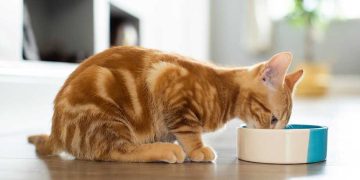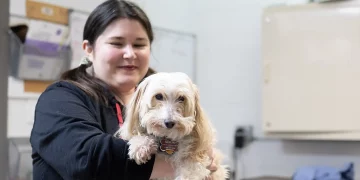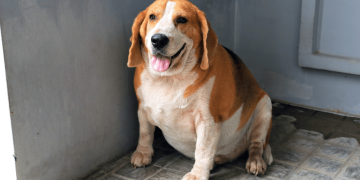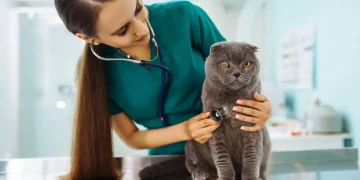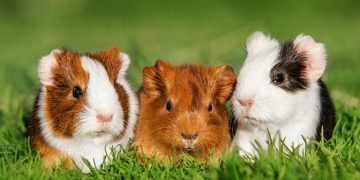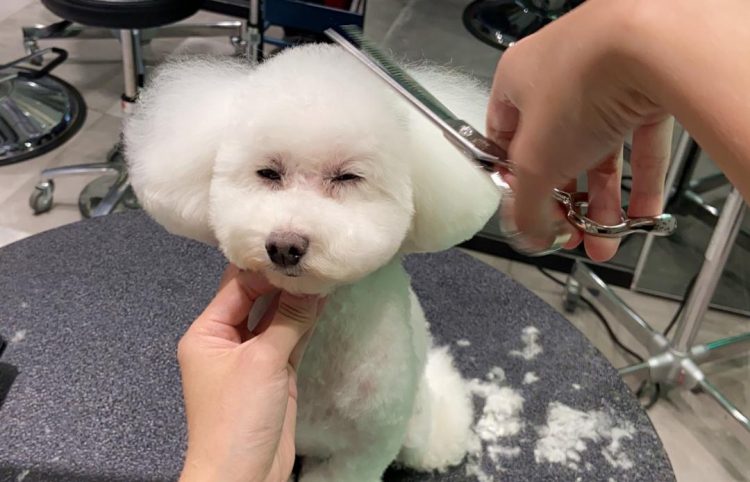Maintaining your pet’s coat is an essential part of pet care, and regular grooming helps keep your pet comfortable and healthy. However, the frequency with which you should trim your pet’s hair can vary depending on several factors such as the breed, coat type, and lifestyle of your pet. Understanding how often to trim your pet’s hair can prevent matting, reduce shedding, and ensure that your pet remains clean and healthy.
Factors That Affect How Often to Trim Your Pet’s Hair
1. Coat Type
The type of coat your pet has plays a significant role in how often their hair needs to be trimmed. Different breeds have different grooming requirements, so it’s important to consider their coat type:
- Short-Haired Breeds: Pets with short coats, such as Beagles, Boxers, or Dachsunds, generally don’t require frequent hair trims. Their hair usually grows slower and doesn’t mat as easily. In most cases, a trim every few months or as needed is sufficient to keep their coat healthy and tidy.
- Long-Haired Breeds: Pets with long or medium-length coats, such as Shih Tzus, Poodles, or Collies, require more frequent trimming to prevent their hair from becoming tangled or matted. Long coats also tend to shed more, so regular trims every 6–8 weeks help manage this issue and prevent mats from forming.
- Curly or Wavy-Coated Breeds: Dogs like Poodles or Bichon Frises have curly coats that grow continuously. These types of coats require trimming every 6–8 weeks to keep them manageable and to avoid matting. These dogs are often considered “low-shedding,” but their hair can become tangled if not trimmed regularly.
- Double-Coated Breeds: Dogs with double coats, such as Huskies, Golden Retrievers, or Australian Shepherds, shed heavily, and their coats require regular brushing to remove loose hair. While their hair doesn’t need to be trimmed as frequently, regular grooming every 8–12 weeks will help keep their coat healthy and reduce the risk of mats and tangles. Trimming should mainly focus on the areas prone to mats, like the paws and underbelly.
2. Lifestyle and Environment
Your pet’s lifestyle and environment also influence how often you should trim their hair. If your pet spends a lot of time outdoors, their coat may become more prone to dirt, tangles, and matting. Additionally, pets that frequently get wet, whether from swimming or playing in the rain, may require more frequent grooming and trimming.
- Indoor Pets: Pets that live indoors and don’t experience the outdoor elements may require less frequent trimming, especially if they have short coats. However, indoor pets are still prone to matting in areas like their paws or behind the ears, so trimming every 8–12 weeks may still be necessary.
- Outdoor Pets: Pets that spend time outside and are exposed to various environmental factors like dirt, leaves, and water may require more frequent grooming and hair trimming. Outdoor pets should be trimmed more frequently to maintain cleanliness and comfort, especially if they have longer or denser coats.
3. Matting and Tangling
Matting and tangling can occur in all pets, but they are particularly common in long-haired or curly-coated breeds. Regular trimming can help prevent these problems by removing the hair that is prone to tangling. If mats develop, they can cause discomfort and even lead to skin irritation or infection.
- Preventing Mats: Trimming your pet’s hair regularly can help reduce the risk of mats and tangles. If your pet’s coat is prone to matting, regular visits to a groomer every 6–8 weeks can prevent mats from becoming uncomfortable or harmful.
4. Health and Hygiene
Trimming your pet’s hair is not only about aesthetics but also about hygiene. Hair that grows too long can accumulate dirt, debris, and moisture, leading to skin problems. Pets with overgrown hair may also have difficulty seeing or walking comfortably, especially if their fur covers their eyes or paws.
- Eyes and Paws: Regular trimming around the eyes and paws is crucial for maintaining your pet’s health and hygiene. Hair that grows over your pet’s eyes can cause irritation or even obstruct their vision, while long hair around the paws can get caught in debris, leading to discomfort and potential injury.
5. Grooming Needs of Specific Breeds
Some dog breeds have specific grooming and trimming requirements due to their unique coat types. For example:
- Poodles: Poodles need regular trims every 6–8 weeks to maintain their signature look and prevent their curly hair from matting. Their hair grows continuously and requires professional grooming to maintain its shape and texture.
- Shih Tzus: Shih Tzus have a long, flowing coat that requires regular trimming, especially around the eyes, ears, and underbelly. Trims every 6–8 weeks are common to maintain their coat’s appearance and prevent tangling.
- Schnauzers: Schnauzers often need regular trimming every 6–8 weeks, especially in areas like the eyebrows, beard, and legs. Their coat is dense, and they may need professional grooming to maintain their signature “Schnauzer look.”
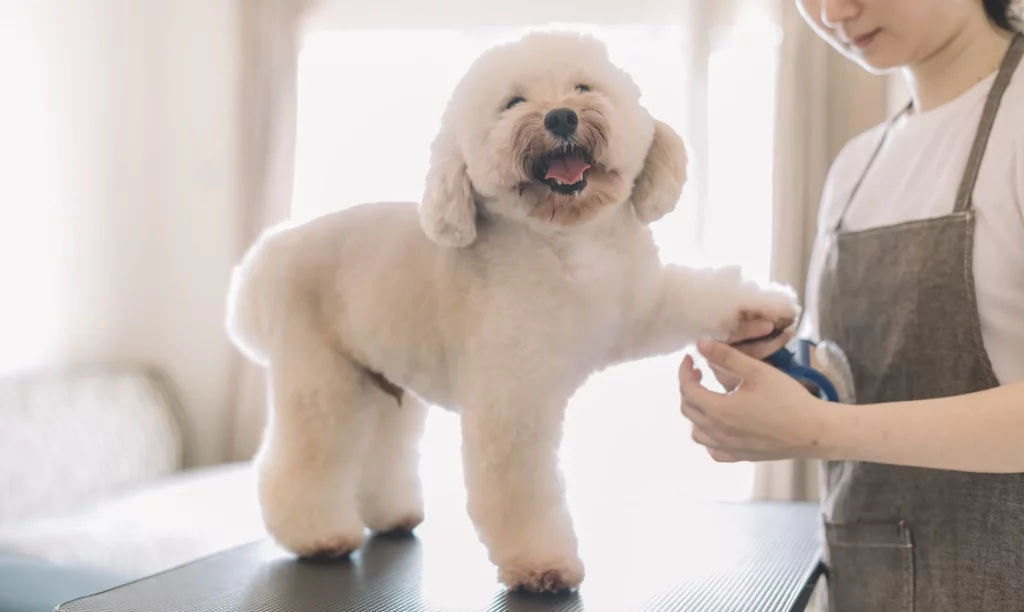
How to Care for Your Pet’s Coat Between Trims
While regular trimming is essential, you can also maintain your pet’s coat between visits to the groomer by following these simple grooming practices:
1. Regular Brushing
Frequent brushing is key to preventing mats and tangles and helping to remove loose hair. For pets with long or curly coats, daily or weekly brushing is essential to maintain the coat’s health. Brushing not only removes debris and prevents matting but also stimulates the skin’s natural oils, keeping the coat shiny and healthy.
- Short-Haired Pets: Brushing once a week is usually sufficient for short-haired pets to remove loose hairs and keep their coat shiny.
- Long-Haired Pets: Long-haired pets should be brushed daily or at least every other day, especially if they are prone to tangling. Brushing their hair helps distribute natural oils and prevents mats from forming.
2. Bathing
Regular bathing helps keep your pet clean and healthy. Use a pet-safe shampoo that is gentle on their skin and coat. Bathing your pet every 4–6 weeks, or more often if they get dirty, will help keep their hair manageable and prevent matting. After a bath, ensure your pet is thoroughly dried to avoid moisture buildup, which can lead to skin issues.
3. Trimming Specific Areas
If you don’t want to trim your pet’s entire coat, you can focus on certain areas that are more prone to matting and discomfort. Common areas to trim include:
- Paws: Trim the hair around the paws to prevent dirt and debris from getting trapped.
- Eyes: Trim the hair around the eyes to keep the area clean and free from irritation.
- Ears: Trim the hair around the ears to keep them clean and prevent infections.
- Belly: Trim the hair on the belly to prevent matting and keep it clean, especially in long-haired pets.
Conclusion
The frequency with which you should trim your pet’s hair depends on several factors, including their coat type, lifestyle, and grooming needs. Pets with long, curly, or thick coats require more frequent grooming (every 6–8 weeks), while short-haired pets may only need trimming every few months or as needed. Regular brushing, bathing, and professional grooming are essential for maintaining your pet’s coat and overall health. By keeping your pet’s coat well-maintained, you’ll not only keep them looking their best but also ensure they remain comfortable and healthy.









